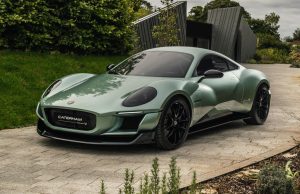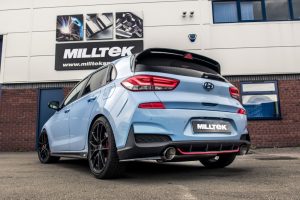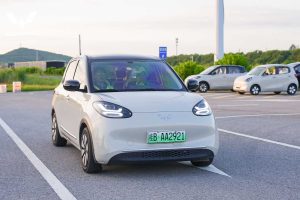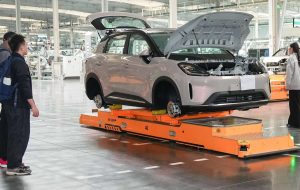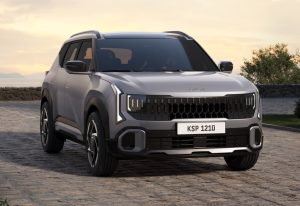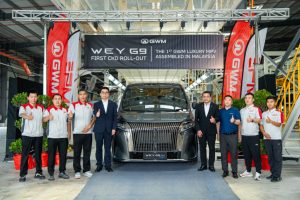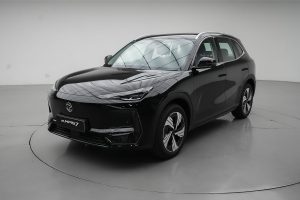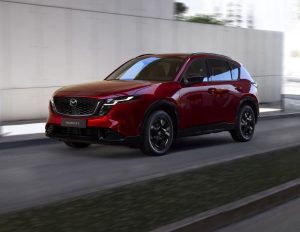THE Honda City Hatchback has clearly revived an interest in such cars among younger car owners who see them as sporty alternatives to the sedans.
And with the hatchbacks offering greater flexibility in interior accommodation for luggage and sundry items, the appeal is further enhanced.
The sales numbers seem to bear that out as the hatchback variant are almost matching that of the sedan in the volume of cars sold, hovering around the 40:60 (hatchback/sedan) ratio.

The latest City Hatchback continues to reflect this trend as more than 3,000 orders were received, with many already delivered, since the new facelift was launched in late May.
To impress on that further, more than 28,700 City Hatchbacks have been sold since this model variant was launched in December 2021 (10,300 in 2023).
With the youthful factor in sales demographics for this hatchback trend, it underscores the wisdom of having more model variants to pander to a wider market portfolio.

Having the e:HEV variety in the City line-up is not new as this variant was already introduced to the fifth generation series when it was launched in 2021.
And with the latest City range, the e-HEV RS variant continues to serve as the flagship variant as it comprised 16% of total Honda hybrid sales to-date.
A recap on the e:HEV system is the 1.5-litre Atkinson Cycle four-cylinder engine which charges the battery that drives the car primarily; it’s a hybrid system born out of Honda’s i-MMD (intelligent multi-mode drive) technology.

As such, the battery power output is more important being 109PS (80kW) and 253Nm of torque from 0-3,000rpm.
The 1.5-litre Atkinson engine is rated at 98PS (72kW) at 5,600-6,400rpm and 127Nm from 4,500-5,000rpm.
All the driving output is channelled to the front wheels via the e-CVT or electronic continuously variable transmission.

Honda says the City Hatchback e.HEV RS accelerates from 0 to 100kph in 9.7 seconds (a second quicker than the non-hybrid models) but has a lower top speed of 177kph against the non-hybrid variants that could go above 190kph.
The hybrid advantage is clearly noted in the engine fuel consumption of 3.7 l/100km or 27km per litre (against the non-hybrid 5.6 l/100km or 17.8km a litre).
That set the tone for the media drive between the Klang Valley and Ipoh, covering a variety of secondary roads on the first day and a highway cruise the following day.

With the aim of getting the best mileage with carrots dangled as a reward, it meant driving the City Hatchback e:HEV RS with good accelerator control and traffic anticipation.
Unfortunately, not all of us (we were assigned three to a car) had that in mind and despite achieving an initial indicated fuel consumption reading of more than 26.5km/l on the instrument panel, we ended up third with a return of 25.1; the winning team won with a return of 26.6km/l.
This was achieved driving at sober speeds that were lower than the highway standard of 110kph but it is not something we would recommend, given how often we were overtaken by prime movers and trucks.

A more realistic return would be around 20-21km/l driving at 110kph on highways.
Frugal consumption aside, the City Hatchback facelift comes with several aesthetic updates to maintain its strong appeal.
There are new design touches front and rear, with the former seeing a newly designed honeycomb grille, lower grille and a bumper with a more aggressive look, supported by front foglamp garnish.

This new styling exercise is said to give the City Hatchback facelift a “sharper, more aggressive exterior that exudes pure excitement”.
The car’s sporty appeal is further boosted at the rear with a new sleek rear bumper lower garnish design as well as a “captivating” new design side sill garnish that is said to add a touch of sophistication.
Rounding up the facelift elements are new alloy wheels and for the e:HEV RS are the Berlina Black 16-inch alloys that Honda believes deliver a complete hot hatch look.

The Honda Sensing system is also improved with new functions in the Lead Car Departure Notification and for the e:HEV RS, the Low Speed Follow for more convenient driving.
The City Hatchback is also said to have improved seat design and for the e:HEV RS (as well as the non-hybrid RS model), the back rest is upholstered in perforated leather and the seat squabs in combi leather material; red stitch accents come standard.
Getting comfortable in the driver’s seat is a matter of selecting the best driving position manually, and the telescopic and height-adjustable steering wheel plays its part.

The meter on the left of the instrument panel indicates electric power flow rather than engine revolutions, with a small green segment indicating that the battery is being charged.
It is almost similar to driving an electric vehicle (EV) but you do hear the engine revving up to charge the battery if you are aggressive on the accelerator, which drains the battery.
With achieving good fuel economy in mind, we kept the electric power flow needle as low as possible and coasted when we saw the vehicle in front slowing down.

To do the latter, you have to allow enough space to the vehicle in front so that you have time to react, often without having to brake most of the time.
You could use the deceleration paddle on the steering column to slow, similar to that used in EVs but we didn’t find the need to do so during our turn at the steering wheel.
As a backseat passenger, we found the City Hatchback much to our liking in the good space layout as we could lounge comfortably; the only thing lacking is a foldable centre armrest.

The rear backrest is split 60:40 and when folded, the entire seat assembly slides forward, being part of the flexible Ultra seat design that was introduced from the second generation (2002).
The ride is comfortable for an entry-level model and Honda engineers tuned the front MacPherson struts and rear torsion bar suspension system well to achieve that.
It absorbed the impacts nicely when going over the many potholes and bumps along secondary roads, and this good ride was also enjoyed from a rear passenger perspective.

We also found the City Hatchback a nice car to drive along the winding Ulu Yam road at reasonably quick speeds, with little body roll to encourage us to explore its limits.
Good sound insulation was also noted although this was gauged at slower speeds than usual but past experiences tell us that we won’t be disappointed even when driving at a higher pace on highways.
If we have any reservations about the City Hatchback e:HEV RS, it is the RM112,900 price (on the road without insurance).

There are so many rival options out there with more competitive prices and it boils down to brand loyalty and a need for a fuel frugal car.
With the impending subsidy cut for petrol, the City Hatchback e:HEV RS might just make good sense after all.


